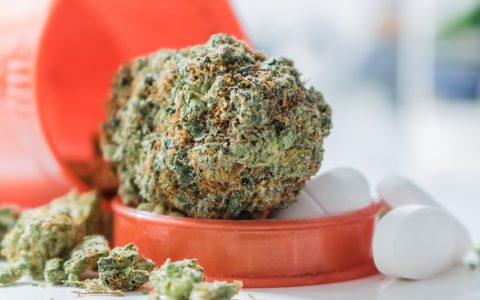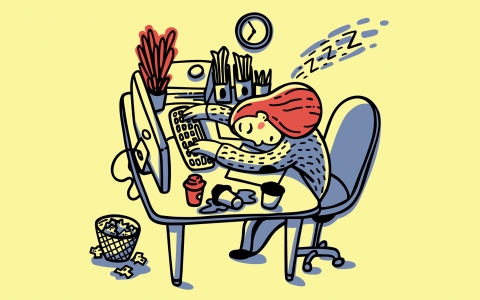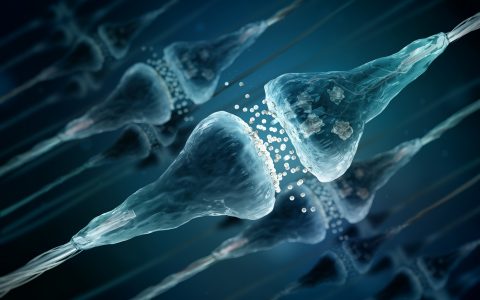While working at a cannabis dispensary, I discovered the power of the body’s endocannabinoid system (ECS), and how cannabinoids in cannabis—like THC and CBD—can interact with it to deliver a variety of stunning medical results. I’d also learned that the cannabinoid cannabinol (CBN) had a reputation for being a great aid to insomnia fighters.
At the time, cannabis laboratory Steep Hill reported, “The consumption of 2.5mg to 5mg of CBN has the same level of sedation as a mild pharmaceutical sedative, with a relaxed body sensation similar to 5mg to 10mg of diazepam.” They’re a widely respected company and this quote is all over the canna-net, so I bit.
I turned to a CBN product (a 1:1 CBD/CBN tincture, to be precise), which happily did seem to deliver comparable results to the pharmaceutical insomnia medications I’d been taking. Knowing that THC degrades and turns into CBN when exposed to elements like heat, air and light over time, I wondered if I could devise a more cost-effective way to make CBN medicines from regular ol’ THC flower.
I figured if I left buds sitting in a dish by the sunny window, it might result in higher CBN content—thereby, a handy DIY sleep medication. After doing so for awhile, I hadn’t noticed any differences in effect (just crunchiness), and so started digging to see if this was actually a feasible way to raise CBN levels.
But as I started digging into my DIY method, my objective (and methods—more on that below) quickly became questionable.
Things Get Murky on CBN and Sleep
It turns out, though there are numerous products in the cannabis industry that aim to promote sleep via CBN the link between the two lacks scientific foundation. In fact, only one (well-cited) study has signified that this effect is in play, but the study is highly problematic.
The results point to sedation only when CBN was used in combination with THC.
In addition to questionable methods, the results point to sedation only when CBN was used in combination with THC—a finding that could be attributed to the phenomenon known as the entourage effect, wherein cannabinoids work synergistically with one another, as well as with other components of cannabis (like terpenes and flavonoids), to create a stronger effect.
So Where Did the Supposed Connection Come From?
According to Dr. Ethan Russo, Director of Research and Development at the International Cannabis and Cannabinoids Institute, this might be due to people feeling tired after smoking old and/or improperly stored buds. He said that the sedating effects of aged cannabis are often misattributed to CBN because of the previously described degradation process that creates the cannabinoid. However, he says the sedative effects of old cannabis are more likely due to other components of the plant that change as cured cannabis ages.
He shared that old cannabis tends to be sedating due to a loss of monoterpenoids and a retention of sesquiterpenoids, which have a soporific (or drowsy) effect. He added that the addition of another cannabinoid, CBN in this case, to a cannabis sleep regimen may increase the aforementioned entourage effect—but that CBN hasn’t been shown to be sedative on its own, and he contends that it is not more sedating than other cannabinoids.
Then Why Does CBN Seem to Work for Some?
So, how come CBN products seem to work for so many rough sleepers? It’s possible that CBN is working that entourage effect, being the perfect addition their nighttime cannabis routine. Or, the product-in-question may have also had additional ingredients that worked effectively (like sesquiterpenoids).
As is often the case in cannabis, there’s a lot of research left to be done on this topic, but I did get my answer. Dr. Russo says, “Setting out cannabis in the sun is a good way to waste the monoterpenoid fraction and leave sedating sesquiterpenoids and CBN behind.” (However, he thinks this is likely to take a significant amount of time, and does not recommend my method.)
We reached out to Steep Hill for comment on that quote comparing CBN to diazepam. They didn’t reply, but did change their CBN text to read, “Initially, it was reported that CBN was a promising adjunct in the treatment of insomnia, but with the advent of a few small trials, sedative qualities have not been observed. Further study is required.”
Cannabis Is Still a Fierce Sleep Aid
For now, Dr. Russo informs us that the best known way to use cannabis for sleep is to combine THC with other sedating components, like the terpenes myrcene and linalool. He told us that cannabis isn’t such a successful sleep aid because it’s wildly sedating, but because it treats underlying conditions that are keeping people awake.
He emphasized the importance of treating what, precisely, is keeping the person from sleep. For instance, if you’re incredibly tired, but your mind is racing a jillion miles an hour—you probably want a good dose of CBD for anxiety in your nighttime routine.
So, reflect on the things that keep you up (he said pain and spasms are two more big ones), and do some research and experimenting to find the best approach to treating what ails, allowing your bod to get the rest it needs.
And as for CBN, time will tell as to if this cannabinoid has any particular super powers—but the jury is still out on whether sedation is one of them.






